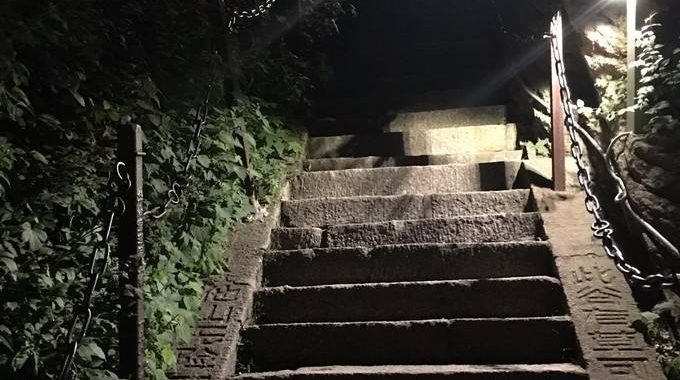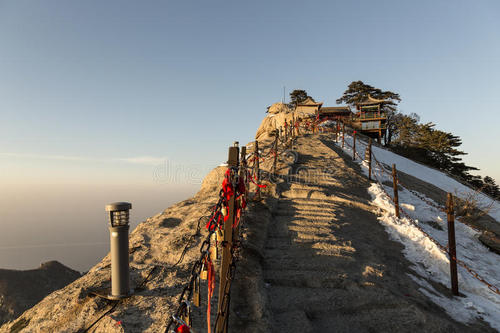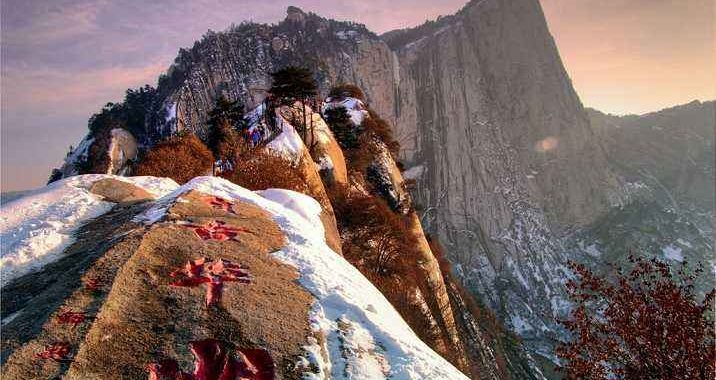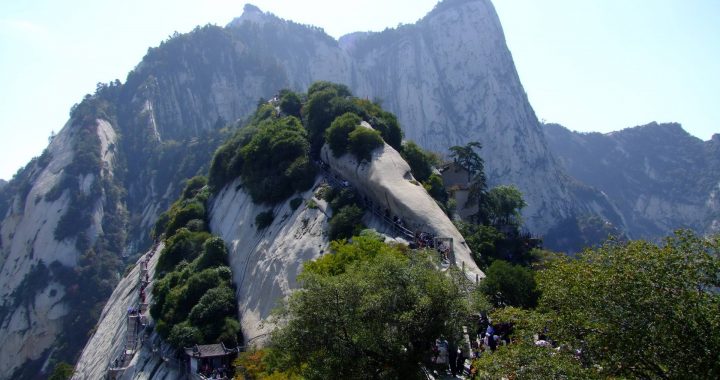Hua Shan, a Painting Springs to Life
3 min readAs the minibus ascends the winding road to Hua Shan, the jagged scenery unfolds like a captivating piece of Chinese calligraphic art.

Overhanging rock and distant precipices wink from above, and clumps of vegetation peek out from mysterious crevices. Hua Shan’s awe-inspiring peaks will take your breath away.
Located some 74 miles (120 km) from the ancient capital Xi’an in Shaanxi Province, Hua Shan is the result of dramatic tectonic movements millions of years ago, and is one of China’s most perilous mountain areas. Although covering an area of just 58 square miles (150 km2), Hua Shan is inundated with over 70 peaks and ridges.

This ridge on Hua Shan’s West Pealk is inaginatively likened to a carp’s back. (hudshon) The most outstanding peaks are North, South,east, West and Central- they stand like the petals of a lotus flower reaching for the heavens. These five imperious peaks gaze over the Wei and Yellow Rivers in the north and embrace the Qinling Mountains in the south.
At7,085feet(2,160m), South Peak han feng) tops the lot. Her closest rivals are East Peak(dong feng) and West Peak(xi feng). The Central Peak(zhong feng), also called Jade Maiden Peak(yunu feng) and the North Peak(bei feng are slightly less statuesque but equally beautiful. In the early mornings and late evenings, cushions of mist dramatically swirl around these granite peaks, lending a romantic and mythic air.

All five peaks are accessible by foot, and for even the most lethargic- by cable car.
The Austrian built cable car has its terminus at the “base” of Hua Shan and ferries visitors to the North Peak From the North Peak, you can step your way to the other four peaks and scenic spots.

Hua Shan has inspired much lyrical poetry through the ages, some of which is carved onto the rock outcroppings. Poets and their paramours have strolled beneath its granite arches, lovers have stolen kisses beneath the dipping willows and under the privacy of peak-top pavilions from stone. Heroes have visited, hermits have sought serenity and legends have flourished at these rocky walls.
The mountain has electrified the imaginations of generations of visitors, testified by the interesting names given to he and crevices atop Hua han lovely titles like Lotus Flower Cave or Waterfall Cave. Ridges have names like Blue Dragon, Flying Fish, Lion and Black Tiger. Mountain terraces are christened Peach Woods and Wild Ginger for the particular fruit and flora that grace the warmer seasons.
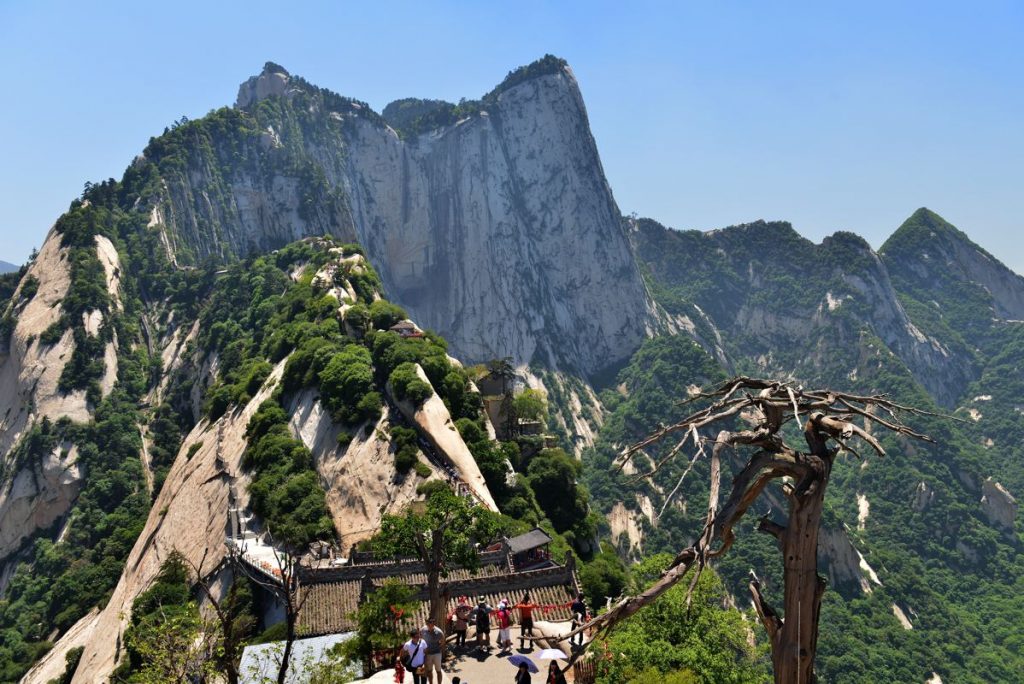
There are nine cliffs: Looking onto the Wei River(fuwei ya), Touching Ear(caerya), Thrusting into the Clouds(chongxiao ya), Sacrificing Oneself esca (sheshen), Escaping the Imperial Edict(bizhao ya), Bright Star (mingxingya),nggydsandbyuyadotasPaun《anzbngy ) There are also eight viewing platforms with colorful names like the Three Emperors (sanhuang tai), Immortals Gathering(juxian tai) and Purple Vapor(ziqi tai). They are built in traditional styles in harmony with the area’s’ natural beauty.
The view from any angle is pretty neat.
Mountain rivulets meander along the many twists and turns of metamorphic rock. The water is funneled into dramatic Qingke Waterfall(qingke ping), about6.2 miles (10 km) from the mouth of the valley.
